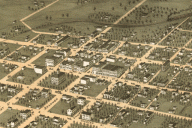Tennessee had the second most battles in Civil War history, only after Virginia. These living landscapes offer visitors a glimpse into the past – commemorating the most divisive event in US history. Of all of the events in American history, it is certainly one of the most significant. It transformed the country in many different ways.
The battlefields are preserved as reminders so that Americans can remember how significant the Civil War was, and it’s importance to history.
Some facts about the Civil War in Knoxville:
- Most of the Civil War dead from the battle in Knoxville are buried in the Confederate Cemetery, which is located in East Knoxville.
- During the Civil War, the Siege of Knoxville lasted 17 days (November 17 – December 4, 1863) and ended with the Confederates never taking Knoxville.
- The Civil War battle in Knoxville ended with General James Longstreet’s failed, bloody attempt to storm General Ambrose Burnside’s fortifications at Fort Sanders.
- During 1860, Knoxville was a small city of about 3,700 people.
- During 1860, Knox County was home to more than 20,000 white citizens and more than 2,000 slaves.
- Fort Sanders is named after General Sanders, who was killed in a skirmish during the Civil War.
- Bethel Cemetery on Mabry Hill contains the remains of approximately 1,670 Civil War soldiers.





















No Comments